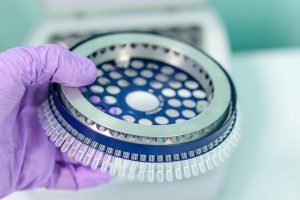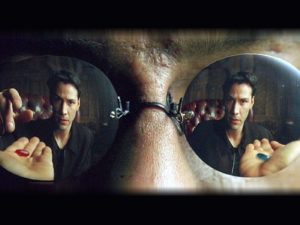Plain numerical DOI: 10.1001/jama.1919.02610310005002
DOI URL
directSciHub download
Fulltext: sci-hub.ru/10.1001/jama.1919.02610310005002
Abstract:
The experiments here described were performed on an island in Boston Harbor, on volunteers obtained from the Navy. The work was conducted by a group of officers detailed for that purpose, from the U. S. Navy and the U. S. Public Health Service, consisting of Dr. G. W. McCoy, director of the Hygienic Library, Dr. Joseph Goldberger, Dr. Leake, and Dr. Lake, all on the part of the U. S. Public Health Service; and cooperating with those medical officers, was a group also detailed for this purpose on the part of the U. S. Navy, consisting of Dr. J. J. Keegan, Dr. De Wayne Richey and myself.
The work itself was conducted at Gallops Island, which is the quarantine station of the Port of Boston, and peculiarly well fitted for operations of this kind, serving adequately for the purposes of isolation, observations, and maintenance of the large group of volunteers
—
Excerpt:
“The volunteers were all of the most susceptible age, mostly between 18 and 25, only a few of them around 30 years old ; and all were in good physical condition. None of these volunteers, 100 all told in number, had “influenza ;” that is, from the most care¬ ful histories that we could elicit, they gave no account of a febrile attack of any kind during the winter, except a few who were purposely selected, as having shown a typical attack of influenza, in order to test questions of immunity, and for the purpose of control. Now, we proceeded rather cautiously at first by administering a pure culture of bacillus of influenza, Pfeiffer’s bacillus, in a rather moderate amount, into the nostrils of a few of these volunteers. These early experiments I will not stop to relate, but I will go at once to what I may call our Experiment 1.”
***
As the preliminary trials proved negative, we became bolder, and selecting nineteen of our volunteers, gave each one of them a very large quantity of a mixture of thirteen different strains of the Pfeiffer bacillus, some of them obtained recently from the lungs at necropsy; others were subcultures of varying age, and each of the thirteen had, of course, a different history. Suspensions of these organisms were sprayed with an atomi¬ zer into the nose and into the eyes, and back into the throat, while the volunteers were breathing in. We used some billions of these organisms, according to our estimated counts, on each one of the volunteers, but none of them took sick. Then we proceeded to transfer the virus obtained from cases of the disease ; that is, we collected the material and mucous secretions of the mouth and nose and throat and bronchi from cases of the disease and transferred this to our volunteers. We always obtained this material in the same way : The patient with fever, in bed, has a large, shallow, traylike arrangement before him or her, and we washed out one nostril with some sterile salt solution, using perhaps 5 ce., which is allowed to run into this tray ; and that nostril is blown vigorously into the tray. This is repeated with the other nostril. The patient then gargles with some of the solution. Next we obtain some bronchial mucus through coughing, and then we swab the mucous surface of each nares and also the mucous membrane of the throat. We place these swabs with the material in a bottle with glass beads, and add all the material obtained in the tray. This is the stuff we transfer to our volunteers. In this par¬ ticular experiment, in which we used ten volunteers, each of them received a comparatively small quantity of this, about 1 c.c. sprayed into each nostril and into the throat, while inspiring, and on the eye. None of these took sick. Some of the same material was fil¬ tered and instilled into other volunteers but produced no results.
***
Our next experiment consisted in injections of blood. We took five donors, five cases of influenza in the febrile stage, some of them again quite early in the disease. We drew 20 ‘c.c. from the arm vein of each, making a total of 100 c.c, which was mixed and treated with 1 per cent, of sodium citrate. Ten c.c. of the citrated whole blood were injected into each of the ten volunteers. None of them took sick in any way. Then we collected a lot of mucous material from the upper respiratory tract, and filtered ‘ it through Man- dler filters. While these filters will hold back the bacteria of ordinary size, they will allow “ultramicro- scopic” organisms to pass. This filtrate was injected into ten volunteers, each one receiving 3.5 c.c. sub- cutaneously, and none of these took sick in any way.
***
en.wikipedia.org/wiki/Milton_J._Rosenau

Plain numerical DOI: 10.1177/00333549101250s306
DOI URL
directSciHub download
Show/hide publication abstract
Excerpt:
“Perhaps the most interesting epidemiological studies conducted during the 1918–1919 pandemic were the human experiments conducted by the Public Health Service and the U.S. Navy under the supervision of Milton Rosenau on Gallops Island, the quarantine station in Boston Harbor, and on Angel Island, its counterpart in San Francisco. The experiment began with 100 volunteers from the Navy who had no history of influenza. Rosenau was the first to report on the experiments conducted at Gallops Island in November and December 1918.69 His first volunteers received first one strain and then several strains of Pfeiffer’s bacillus by spray and swab into their noses and throats and then into their eyes. When that procedure failed to produce disease, others were inoculated with mixtures of other organisms isolated from the throats and noses of influenza patients. Next, some volunteers received injections of blood from influenza patients. Finally, 13 of the volunteers were taken into an influenza ward and exposed to 10 influenza patients each. Each volunteer was to shake hands with each patient, to talk with him at close range, and to permit him to cough directly into his face. None of the volunteers in these experiments developed influenza. Rosenau was clearly puzzled, and he cautioned against drawing conclusions from negative results. He ended his article in JAMA with a telling acknowledgement: “We entered the outbreak with a notion that we knew the cause of the disease, and were quite sure we knew how it was transmitted from person to person. Perhaps, if we have learned anything, it is that we are not quite sure what we know about the disease.”69 (p. 313)
The research conducted at Angel Island and that continued in early 1919 in Boston broadened this research by inoculating with the Mathers streptococcus and by including a search for filter-passing agents, but it produced similar negative results.70–72 It seemed that what was acknowledged to be one of the most contagious of communicable diseases could not be transferred under experimental conditions.”
www.ncbi.nlm.nih.gov/pmc/articles/PMC2862332/



![Johann Wolfgang von Goethe ea30b70a2ef2063ecd0b4401ef444f94eb6ae3d01db316439df2c878_640[1]](https://cognitive-liberty.online/wp-content/uploads/ea30b70a2ef2063ecd0b4401ef444f94eb6ae3d01db316439df2c878_6401-300x200.jpg)
![J. Edgar Hoover on "monstrous conspiracy and morality" 475px-Hoover-JEdgar-LOC[1]](https://cognitive-liberty.online/wp-content/uploads/475px-Hoover-JEdgar-LOC1-238x300.jpg)
![Violence and the brain (Vernon H. Mark and Frank R. Ervin ) firstPage-S0007125000087808a[1]](https://cognitive-liberty.online/wp-content/uploads/firstPage-S0007125000087808a1-232x300.jpg)

![Edwards Bernays 1474019484852[1]](https://cognitive-liberty.online/wp-content/uploads/14740194848521-300x225.png)
![American psychological association & CIA: Science of Deception Workshop e835b00c2df6013ecd0b4401ef444f94eb6ae3d01db3164094f0c971_640[1]](https://cognitive-liberty.online/wp-content/uploads/e835b00c2df6013ecd0b4401ef444f94eb6ae3d01db3164094f0c971_6401-300x220.jpg)
